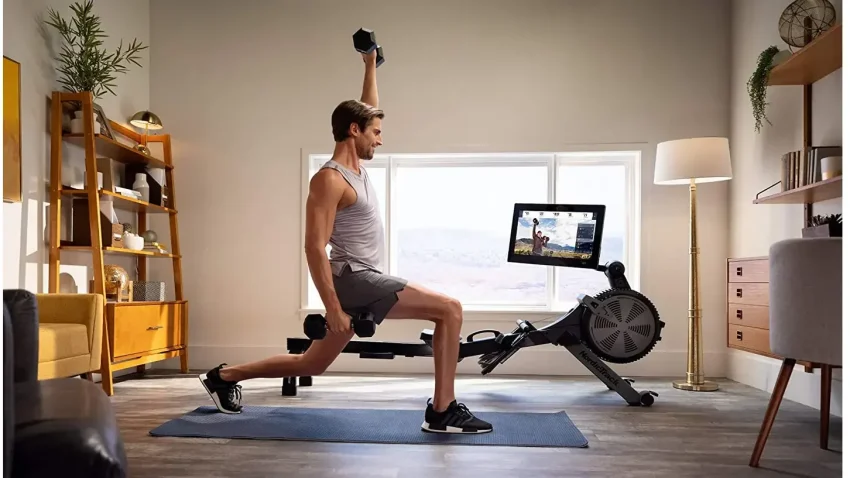As a personal trainer, I understand the dilemma that many of you face when deciding on the right equipment for your workouts. The ideal world would have us owning and enjoying both a treadmill and a rowing machine, but let’s be real – constraints like budget and space often mean we have to choose one over the other.
Our inbox here at Slimopolis often overflows with emails asking, “Should I get a treadmill or a rowing machine?” and “Which is the better workout machine?” Today, we’re going to tackle this common conundrum head-on and break down the benefits and drawbacks of each. Our aim is to help you make an informed decision that perfectly aligns with your fitness goals, personal preferences, budget, and lifestyle.
So, are you ready to dispel the confusion and find the right fit for your fitness journey? Let’s dive right in!
The Rowing Machine
Rowing machines mimic the action of rowing a boat, offering a great full-body workout. The mechanism is simple – you sit on a sliding seat, place your feet on the footpads, grab the handle, and start rowing. As you push back, the flywheel at the front provides resistance, engaging both your upper and lower body.
The Treadmill
The treadmill, on the other hand, offers a more familiar form of exercise – walking, jogging, or running. Its operation is pretty straightforward – step on the belt and start moving. The speed and incline can be adjusted to increase or decrease the intensity of your workout.
Benefits of a Rowing Machine
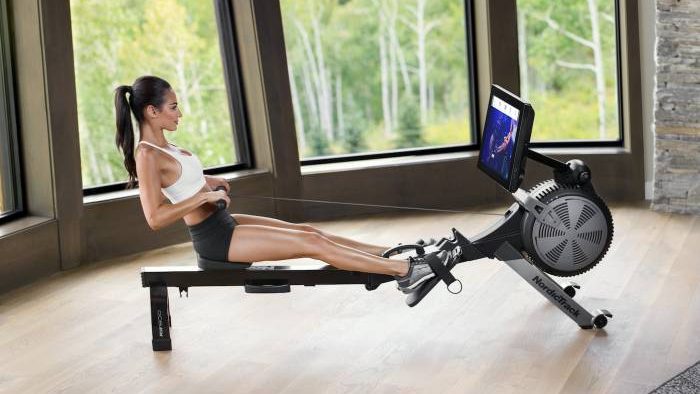
Full Body Workout
Unlike some other cardio machines, the rowing machine engages more muscle groups. Your legs, back, arms, abs – almost every major muscle group is put to work during a rowing session. That’s a bonus point for rowing if you’re looking to hit as many muscles as possible in a single workout.
Low Impact
Rowing is a low-impact exercise, making it easier on your joints compared to running. If you’re recovering from an injury or have a condition that makes high-impact exercise difficult, a rowing machine could be a great choice.
Cardiovascular Health
Rowing offers fantastic cardiovascular benefits. Like any cardio exercise, it improves your heart health, increases endurance, and can even help lower blood pressure.
Weight Loss
Rowing burns significant calories. Of course, the exact number will depend on factors like your weight and workout intensity, but a vigorous rowing session can burn as many calories as running or even more!
Benefits of a Treadmill
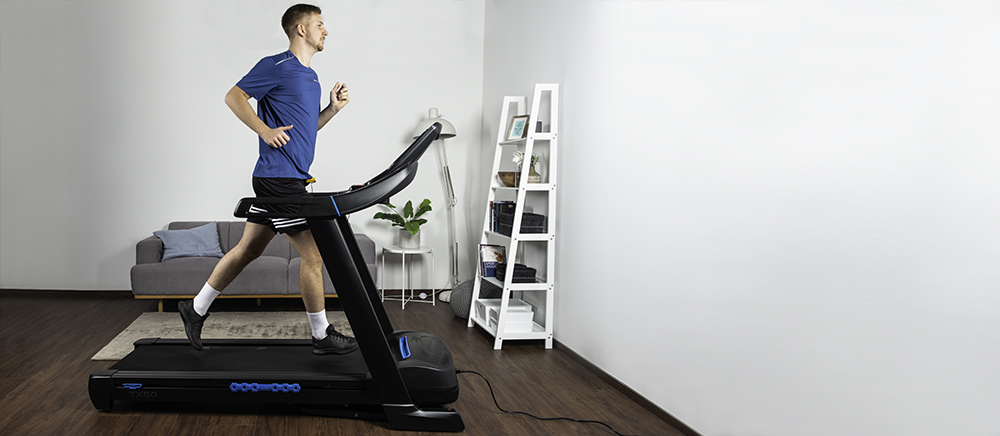
Cardiovascular Health
Running on a treadmill is an excellent aerobic exercise. It gets your heart pumping, helping to strengthen it, lower blood pressure, and improve circulation.
Weight Loss
Here’s the deal: running can burn a ton of calories! For instance, a person weighing 160 lbs can burn approximately 606 calories at a pace of 5 mph for an hour. The faster or longer you run, the more calories you burn.
Versatility
One of the biggest selling points of a treadmill is its versatility. It caters to all fitness levels – you can walk if you’re a beginner, jog if you’re at an intermediate level, or run if you’re advanced. Plus, most treadmills offer incline settings to simulate uphill running, adding an extra challenge.
Comparison of Rowing Machine and Treadmill
Let’s now put our magnifying glasses on and delve deeper into the differences and similarities between the rowing machine and the treadmill.
Calorie Burn
When it comes to torching calories, both machines hold their own. However, the specifics can greatly depend on workout intensity and your body weight. Running can potentially burn more calories per hour due to the natural body mechanics involved, but let’s not discount the rowing machine so fast.
The full-body workout that rowing offers means you’re building more muscle overall, which can help boost your metabolism and increase calorie burn even when you’re at rest. It’s a bit like getting more bang for your workout buck.
Impact on Joints
When considering joint health, rowing machines take the win without a doubt. Their low-impact nature ensures you get a fantastic workout without the harsh impact on your joints often experienced during running. If you’re keen to keep your knees, hips, and ankles happy, a rowing machine might be your new best friend.
Muscle Groups Worked
Let’s talk about muscle engagement. Treadmills, while excellent for cardiovascular health, primarily target your lower body – think calves, quads, hamstrings, and glutes. But what about the upper body, you ask?
Enter the rowing machine. With its dynamic pulling and pushing action, it works over 80% of your body’s muscles. You’re not just toning your legs but also engaging your back, arms, abs, and glutes in a comprehensive full-body workout.
Space Requirements
Now, let’s talk space. If you’re dealing with a space crunch, this could be a deciding factor for you. Rowing machines generally have a smaller footprint compared to treadmills, making them ideal for smaller homes or apartments.
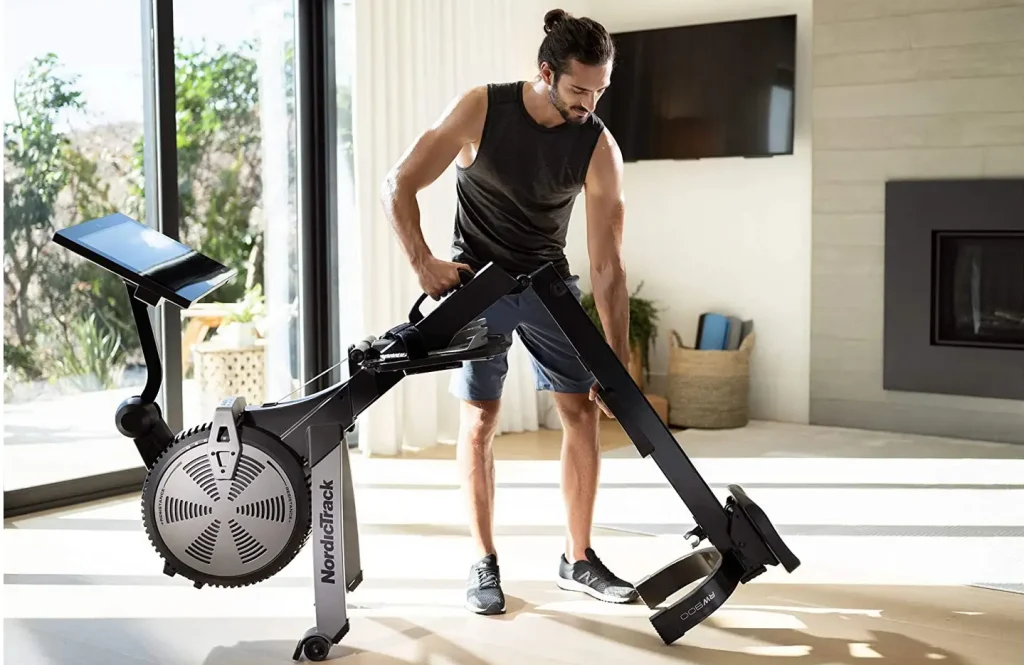
The cherry on top is that most rowers are foldable. You can easily fold them up after your workout, tuck them away, and enjoy your newfound space. And the best part? You can do this without compromising the quality of the equipment.
On the other hand, while there are compact treadmills available, there’s a significant caveat. They often come with lower quality, sporting weaker motors, and smaller running belts, which can compromise both the longevity of the machine and the quality of your workout.
Cost
The cost of both machines can vary greatly depending on the brand, model, and features. Generally, a high-quality rowing machine can often come with a smaller price tag than a comparable treadmill, providing a cost-effective solution for those on a budget.
Noise
Lastly, let’s address the noise factor. Treadmills can often be quite noisy, especially when running at high speeds. If you’re living in an apartment or sharing your living space with others, this could be an issue.
On the flip side, rowing machines are generally quieter. However, it’s worth noting that water and air-resistance rowers can make some noise due to the mechanism involved, though it’s usually less disruptive than a roaring treadmill motor.
Choosing What’s Right for You
So, we’ve done the comparison. Now it’s time to bring in the most crucial factor – YOU. Your personal goals, health considerations, budget, and space availability all come into play when deciding between a rowing machine and a treadmill.
If you’re someone who enjoys the familiar motion of walking or running and primarily wants to improve cardiovascular health or lower body strength, a treadmill might be your equipment of choice. However, remember that compact treadmills often come with some drawbacks, such as weaker motors and smaller running belts.
On the other hand, if you’re looking to get a full-body workout from one machine, a rowing machine could be your ticket. It allows you to achieve similar cardio and weight loss goals to a treadmill while simultaneously building strength in over 80% of your muscles. Remember, this includes your back, arms, abs, and legs.
Additionally, if space is a concern, you’ll find a rowing machine especially attractive. Most models are foldable, allowing you to reclaim your space after your workout without sacrificing the quality of your machine.
Summary
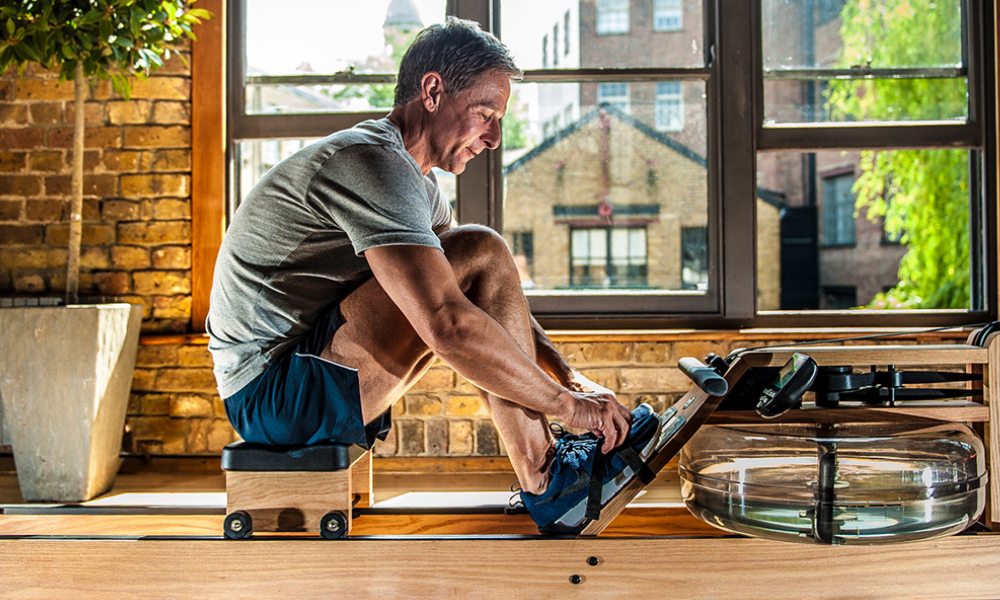
There you have it, folks! We’ve dissected the pros and cons, and now the choice is in your hands. Treadmill or rowing machine – it all boils down to what aligns with your fitness goals, personal preferences, budget, and lifestyle.
Remember, the best exercise equipment for you is one you enjoy and will consistently use. Both the rowing machine and treadmill can offer an excellent workout. So, weigh your options carefully, consider your needs, and make the choice that’s right for you. Stay active, stay healthy, and remember to enjoy the journey!
And, of course, I’ll be here with more fitness insights, tips, and advice. Until then, happy training!
